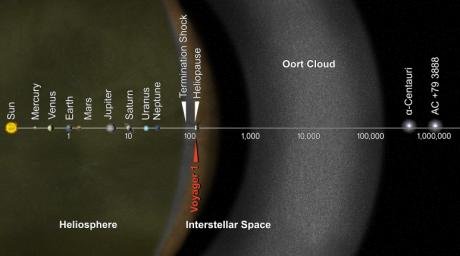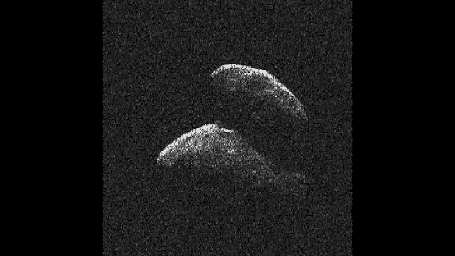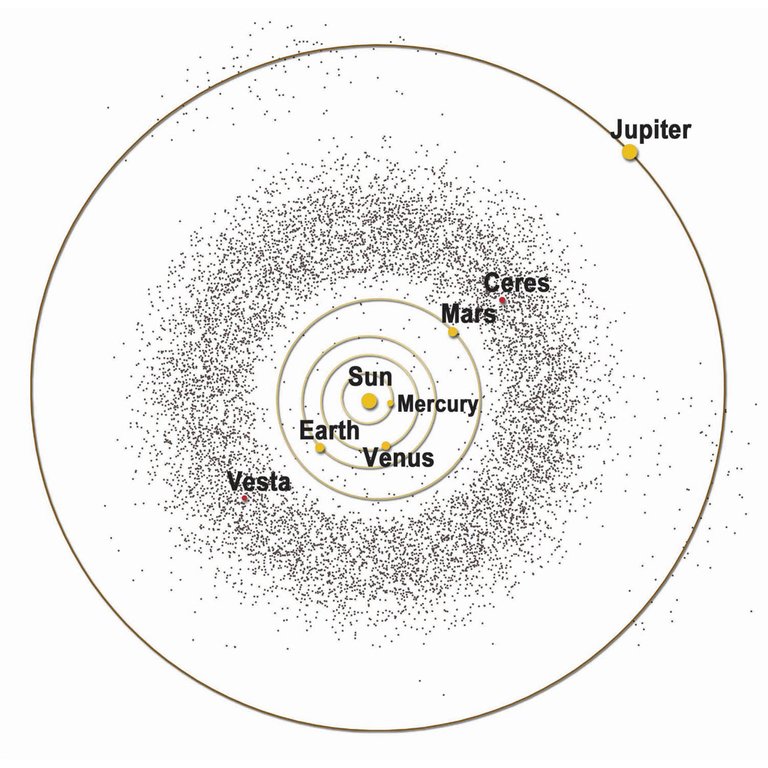asteroid we found in the same orbit as Jupiter that seems to indicate that it might be the second interstellar or extra solar object we've discovered since Oumuamua . Let's discuss about this unusual object known as 2015 BZ509. Hello wonderful people on #Steemit! A very warm greetings to one and all. Hope you all are doing well in your life! In today's article, we're going to be discussing about a very unusual

Hope you people will read my article and provide your valuable suggestions and thoughts by commenting below. So, without any further delay let us start the exploration!!

So, remember how some time ago Oumuamua the first interstellar visitor was discovered that basically entered our solar system and passed by relatively close to Earth and the Sun and then is now on the way out of the solar system. This was the first asteroid that we discovered that actually came from outside of solar system. But interestingly as we suspected it's most likely not even close to being the first one. As a matter of fact that's the first one we detected and it just so happens that in the last few weeks we discovered that. Well, yes there are actually a lot of other objects in our solar system that came from outside of solar system and were not made from the same materials as Earth and the Sun and specifically today we're going to be talking about 2015 BZ509.

It's actually somewhere in the same orbit as Jupiter and this particular object is essentially an asteroid about 13.4 kilometers in radius. Now, it occupies the same plane of orbit or relatively simply of orbit as Jupiter and it actually kind of moves around sort of like Jupiter. But here's the thing though that it's moving in a completely opposite direction. As a matter of fact this orbit is retrograde. This is the first retrograde object we discovered in our solar system and on top of this it's the first object we don't really or can't really explain very easily unless it came from the outside and so today the vast majority of scientists believe that this is the first interstellar immigrant.

In other words it's an object that arrived to a solar system from outside of solar system. But then got captured by Jupiter or maybe something else and stuck to our solar system for the past 4.5 billion years. This object was in the same orbit for a very long time. It actually established a relatively complex but stable orbit around our Sun. But orbiting in a completely different direction and this is actually what makes this so unusual it's so interesting. Nothing else we have orbits in the same way.

So, while everything is going counter clockwise. This is the only object that is going clockwise. Now, we don't really know much about it just yet because we relatively recently started to analyze it. But we know that it's some major axis is about 5.13 Astronomical unit. It’s eccentricity is about thirty-eight percent and it's orbital period is about 11.6 years. So, very similar to Jupiter. Although eccentricity is much higher. Its inclination is also relatively high so which is I believe approximately 163 degrees and so that makes it a little bit more sort of shifted.

But this could be actually another interesting speculation here because this inclination could be caused by Planet 9. Another object we haven't really been able to discover the last years. But what does make this object very unique though is that if it did come from the outside of our solar system we actually need to try to analyze this because this will essentially actually put a dent in a lot of our theories. first of all the theory of creation of the solar system because it just doesn't really make sense how this object was able to be captured so easily so perfectly by I guess Jupiter in the sense.

But also it kind of puts a dent into our orbital theories because we don't really understand how Jupiter allowed it to maintain stability over millions but also billions of years. So, this Co-orbital existence with Jupiter is not very easily explained unless of course it was captured relatively recently and that also kind of raises a lot of new questions here as well. Now some scientists that don't believe that this came from the space essentially speculate that this may have been actually comet. It may have arrived from the Oort cloud and was potentially or is potentially an explanation for Planet 9 once again because some scientists believe that this object maybe came close to Planet 9 and got influenced by its orbital parameters and its gravitational field and eventually was kicked into inner solar system where it gets captured by Jupiter's gravitational interactions and now has this orbit.

So. there's quite a lot of interesting and answered questions here. Did this actually come from our solar system ends was basically yet another proof of Planet 9 or is this an interstellar immigrant? An object that came from somewhere completely different and thus contains materials that might are much older than our solar system and possibly even materials that we don't actually have anywhere else on earth or in the solar system? I guess we don't really expect to find out much more until we go in to try to study this object. But even trying to launch a satellite or some kind of a probe to this asteroid it would be ridiculously difficult because like I said it orbits against the flow.

So, if we launch an actual satellite here. it will have to have a tremendous amount of fuel because it has to try to catch up with this in a retrograde location in a retrograde motion. This means that it has to have like 100 kilometres per second of Delta-V if not more and that's something that we don't really know how to achieve just yet. So, we can only use the telescopes or some other means to passively study this object. But definitely no actual mission is planned here just yet and discovering what's owned or what's in this asteroid will probably a challenge for us for quite some time.

One thing is certain though is that in the near future or I guess in the next few million years this asteroid will most likely change its orbital parameters once again because every time it actually passes by close to Jupiter; it's orbit changes just slightly. Now, it could actually eventually crash at the Jupiter or possibly even get slingshot into an inner solar system and possibly gets in orbit within the asteroid belt just going the opposite direction. But chances are this will still take billions of years because the influence of Jupiter is just very minor; mostly because they're just orbiting in the opposite direction and even at the closest point they're still about 176 million kilometers away from each other.
So, that's kind of all we know about this unusual object yet another mystery in our solar system that we don't really know much about. But hopefully we'll learn more about this because this will allow us to understand the universe. But also the creation of our own solar system and our earth in a lot more detail.
So that's all I wanted to discuss about in this article. the asteroid 2015 BZ509 interstellar an immigrant possibly the first we found. But definitely not the last we found. Thank you so much for reading this article guys and if you've enjoyed reading the information in this article, don't forget to just Resteem for those who enjoys reading space articles and wants to learn more through the information provided here!!


STEEMSTEM
SteemSTEM is a community-driven project that now runs on Steem for more than 1.5 year. We seek to build a community of science lovers and to make the Steem blockchain a better place for Science Technology Engineering and Mathematics (STEM).

discord server and in the last project report. Please also have a look on this post for what concerns the building of our community.More information can be found on the @steemstem blog, on the
It was very interesting and a pleasure to read, mate. :-)Great post @star-vc
I am glad you like it buddy.. :)Hi @astrophoto.kevin!
I am wondering how making the calculations attached to this object may actually help us in localizing planet 9. It still espaces detection so far :)
There are still many study need to be done before we make any conclusion so far! Along with more upcoming researches regarding this topic it will be clear for us. :)Hi @lemouth! Thanks for taking out time and commenting. :)
Hopefully! :)
That's a bit of an oddball asteroid! However, objects with retrograde orbits are not that uncommon in our solar system (mostly comets but there are also asteroid examples).
Thank you very much for the information! Your comment added extra value to the article here.. :)
It might be true that retrograde orbits are not that uncommon. But my context of writing was based on the observed and published information! :)Hi @terrylovejoy!